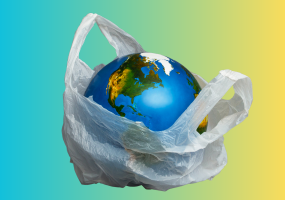The 67-year old future King of England, and author of Harmony (A New Way of Looking at Our World) recently made a plea to the British public to support the local farmers by buying local goods and produce. Prince Charles, who owns the Duchy Originals organic treats and biscuits line, has a knack for architectural design as will be seen in his neo-classical planned home. More widely known are Prince Charles' various and many efforts toward assisting in sustaining the planet.
Here are a few of Prince Charles' personal environment-friendly projects:
# Wine and Cheese Aston Martin Fuel
Prince Charles has a 38-year-old DB5 Aston Martin. More than the make, what is impressive about Prince Charles' car is that it runs on bioethanol derived from wine and cheese. This initiative by biofuel producer Green Fuels, takes into account the amount of surplus wine in Europe which, in 2008, came to 18.5 million hectolitres (at 100 litres = 1 hectolitre). At the same time that Green Fuels began making ethanol from surplus wine, Aston Martin and Prince Charles were making the plans to turn the car into a more environment friendly instrument. Prince Charles' DB5 Aston Martin now runs on 85 percent ethanol mixed with 15 percent fuel.
# The Poundbury Community
This four-phased brainchild by Prince Charles located on 250 acres of land in the Duchy of Cornwall seeks to both support balance with the environment and maintain the feel and spirit of the traditional British village. The project will have 2500 homes for a population of 6000 ready by 2025. Pondbury's design will priotise people over cars so that foot travel is foremost in its considerations. Construction of this vision by Prince Charles is assisted by the expertise of architect Leon Krier.
# Prince Charles' Transylvanian Guest House
The Prince of Wales Guest House in Eastern Europe owned by Prince Charles runs on the highest standards of green initiative and is an effort toward sustainable tourism. The Prince of Wales Guest House is a perfect getaway from modern-day chaos as none of the its rooms have radios or televisions. The guest house is specifically designed to be non-intrusive to the traditional way of life to preserve the charm and the legacy of rural Transylvania that Prince Charles fell in love with on his first visit in 1988. All food and drinks served to guests are locally produced, from the fruits and vegetables of the Prince of Wales Guest House garden to the eggs and meat that come from the 'Black Transylvanian Bare Necked' chicken bred on the guest house grounds. The guest house kitchen also produce jams and preserves. Milk, yogurt, cheese, honey and trout come from village sources.
# International Sustainability Unit
Prince Charles formed the International Sustainability Unit in 2010, in the wake of his successful Rainforest Project, with the aim of determining the most balanced means to deal with such environmental challenges as food security, resilience of the ecosystem and the depletion of natural assets or the Natural capital. The International Sustainability Unit is recognised by Sustainable Urbanisation.
# Home Efforts
The Lifetime Achievement Award was given to Prince Charles in 2012. His efforts as an environmentalist find their way in his own home. Prince Charles' Highgrove residence uses 90 percent energy from renewable sources. Both Clarence House and Highgrove have been installed with solar Solar photovoltaic panels. Sustainably-managed wood replace fossil fuels in the biomass boilers at Highgrove, Birkhall and Llqynywermod.
See Also:









